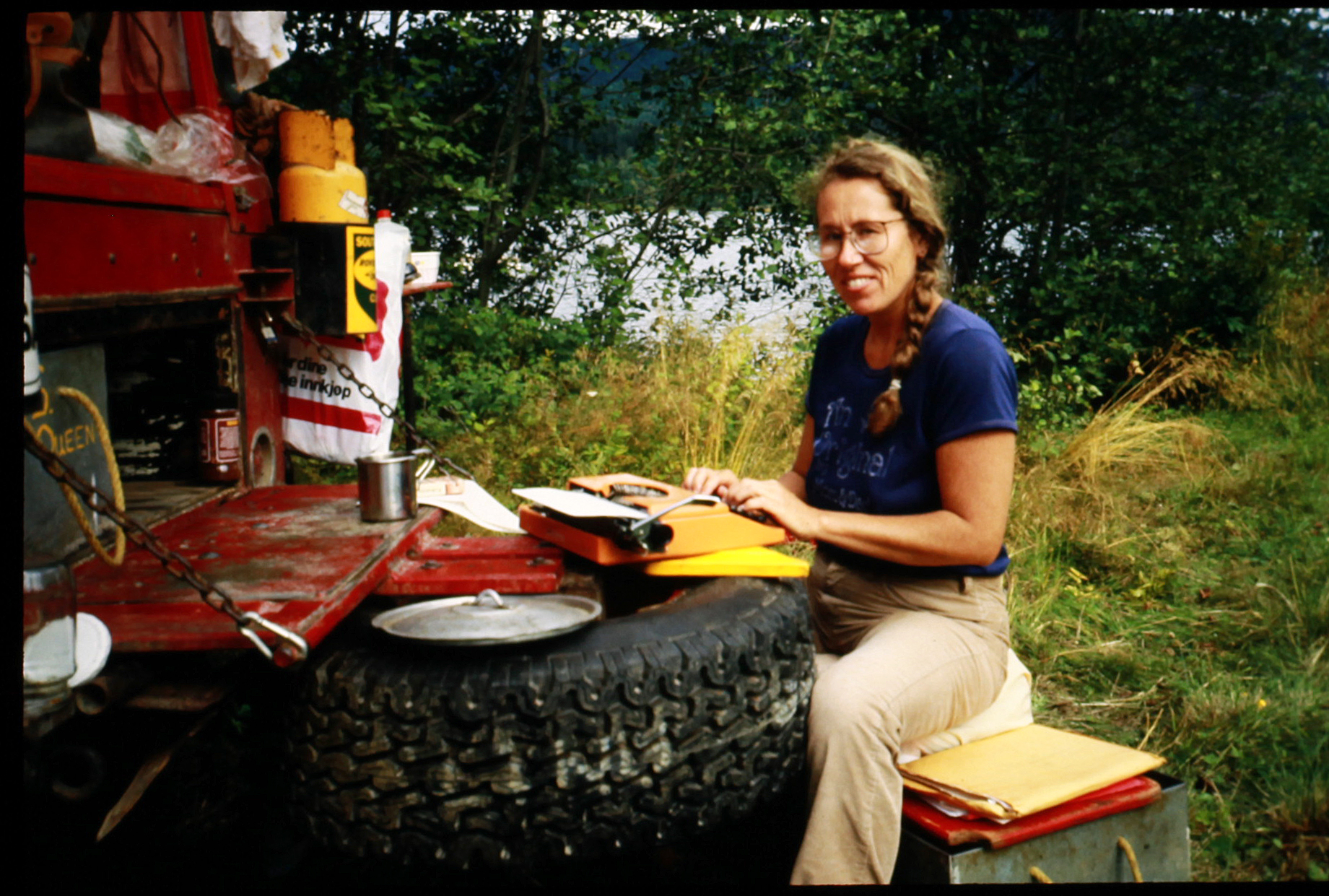Photography courtesy of Patricia Upton and the Estate of Loren Upton
I recently had the pleasure of sharing a glass of wine and a lively conversation with legendary lady overlander Patricia Upton, world traveler and matriarch of the overlanding world, at a campsite outside of Idaho Falls, Idaho. Patricia and I initially met at an Overland Expo event, and I was lucky enough to cross paths with her again at the Teton Overland Show several weeks later. Her exceptional storytelling skills had me completely mesmerized, and I asked if she would like to camp together for a night after the show.
We met up along Birch Creek on land maintained by the Bureau of Land Management. Patty arrived a little after dusk, and we quickly set up a charcuterie-style dinner, after which she fetched a small blanket from her truck so that Shay, her dog and travel companion, would be warm in her lap. As the evening sky faded into darkness, we chatted on topics ranging from international travel to marriage and parenthood. Patty shared stories about her husband, Loren, and the numerous adventures and misadventures had during multiple around-the-world journeys together.
Patricia has lived a nomadic lifestyle since she was a child. Her father served in the US Marine Corps for several years, so she and her family moved frequently. Years later, as a teen, she migrated south to the former Canal Zone in the Republic of Panama, graduating from Balboa High School in 1971. After two years at the Canal Zone College, Patty began working as a Girl Scout Council receptionist. She had been a member of the Girl Scouts since she was young and had achieved the rank of First Class, the highest award a member could receive. She later became the office manager, but unfortunately, her position was eliminated. Around the same time, her first marriage came to an end.
Concurrently, she was given a unique opportunity to join Loren Upton on his Jeep expedition, A World Odyssey – The Epic Voyage of the Sand Ship Discovery. Loren had made three previous attempts at crossing the Darién Gap, all unsuccessful due to many setbacks, including the death of one of his expedition members.
Patty and Loren met during his first attempt at crossing the Gap back in 1975. Two years later, in 1977, Loren returned to the area for a second go. He had arranged for Patty and her husband at the time, John, who were living in Panama, to store his Jeep for him as he made his final preparations. Being good friends, he kept in touch with them over the years and visited them whenever he was in the area.
In 1984, Loren was planning his fourth attempt at crossing the Gap. He had everything he needed except for a photographer to document his journey. He immediately thought of Patty, an experienced photographer and kindred spirit. Patty didn’t hesitate to accept his invitation; she knew how important the journey was and wanted to be a part of it.
Together, Loren and Patty set out on February 22, 1985. They faced many challenges along the way but also experienced moments of pure joy and wonder. Patty captured every moment on camera, and Loren felt grateful to have such an incredible partner by his side. On March 4, 1987, two years and 11 days after they kicked off their expedition, they successfully crossed the Darién Gap in their 1966 CJ-5 Jeep, the “Sand Ship Discovery,” and entered Colombia. This journey earned them an entry into the 1992 Guinness Book of Records for the first all-land crossing of the Darién Gap by vehicle, and Patty’s stunning photographs captured the essence of the journey. They shared a special bond, born from a shared love of adventure and a deep respect for the wilderness, and spent the next 30 years traveling to far-off lands together: South America, Africa, Australia, and the Middle East (to name a few), and eventually married in March 1994.
Patricia Upton has survived everything from a kidnapping attempt to dysentery during her decades of overland travel. Despite all the ups and downs, she persevered and continues to travel solo today. Patty is currently transiting the United States to various events to share the couple’s story. The deep and lasting love she has for Loren and the life they built together is evident in her voice. To embark on unknown and risky paths requires immense bravery, and I feel privileged to have heard about how this remarkable woman navigated her way through life with her soulmate right by her side. It was truly an honor to listen to her story and be inspired by her journey.

Tell me about your first wedding anniversary with Loren.
Our first wedding anniversary, March 21, 1995, was spent in the somewhat scary company of three Fuerzas Armadas Revolucionarias de Colombia (FARC) guerrillas in the village of La Raya, Colombia, in the Darién Gap. Paper is the traditional first wedding anniversary gift, and this turned out to be entirely appropriate—it was paper that possibly saved our butts.
Loren and I were back again on an expedition, attempting to take a two-wheel-drive, American-made Rokon motorcycle through the Darién Gap, all on land. It had been eight years since we went through this same area on our Jeep expedition, and we were eight years older; Loren was 60, and I was 48. To enter this village, we had to cross a very small creek over a flattened log bridge about 10 feet above the current water level. In the rainy season, I’m sure that small creek was a fast-flowing river, around 8 feet deep. Loren went across first with Cookie, our camp boss and cook, and two guides. Loren concentrated on keeping the Rokon on the narrow log, probably about 24 inches wide. I was walking behind and noticed several women in the creek washing laundry and pots and pans, a few young kids bathing and playing in the water, and a young woman, probably about 20 years old, also standing in the creek. It was her and her attire that drew my immediate attention.
She wore military-style camo fatigue pants and a black sports bra topped with a black tank top. Around her waist, she wore a belt with a handgun, a large knife, and several extra magazines for the gun. Across her chest was a large and impressive-looking automatic rifle. All of this I gathered in my brain with as quick a look as possible. My mother always told me not to stare at people.
Cookie, who spoke no English, only Spanish, asked permission to camp overnight in the village, and we were shown to an empty structure—sort of a house elevated a few feet off the ground, with wood plank floors and walls about 4 feet high and a roof of thatched palm. There was a 4-foot gap between the top of the walls and the bottom of the thatching to allow air circulation. The entire room was about 15 feet square. Loren was lying down inside the structure with his legs elevated (a long story), and I was outside organizing stuff with Cookie when the woman from the river and two more similarly attired and outfitted people arrived: another woman, older by several years, and a man in his mid-twenties who appeared to be in charge. Then, the questioning began.
My Spanish is very, very basic and nowhere near correct. I dug into my backpack and pulled out a piece of paper. This paper was a letter from the Colombian Embassy in Washington, D.C., written in Spanish and embossed with a seal, stating what we were doing and to afford us every courtesy possible in our travels. Cookie also chimed in.
All went well that evening. Some of the locals visited and asked a few questions, and we could see, standing on the fringes, the three camo-clad, gun-toting outsiders. I was apparently wearing my rose-colored glasses, as I was in denial that these three were anything but the Colombian military. Later that evening, when I had a chance to whisper quietly with Cookie, I asked him, “Militares o guerrilleros?” He wiped his hand across his mouth, indicating for me to be quiet. About 30 minutes later, Cookie came over to where Loren and I were sleeping to ask for a cigarette. When I gave it to him, all he whispered was, ‘Guerrilleros.’
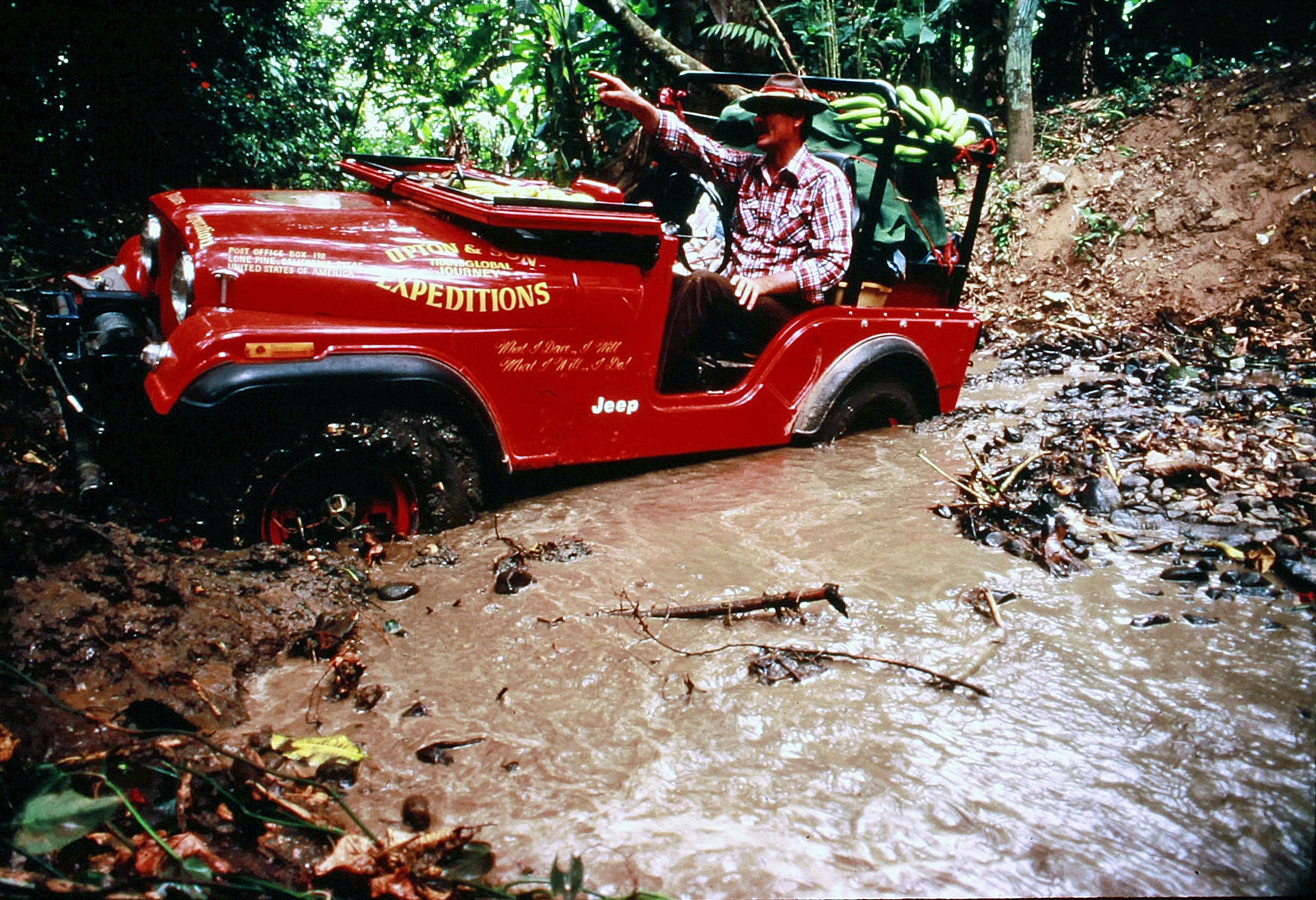
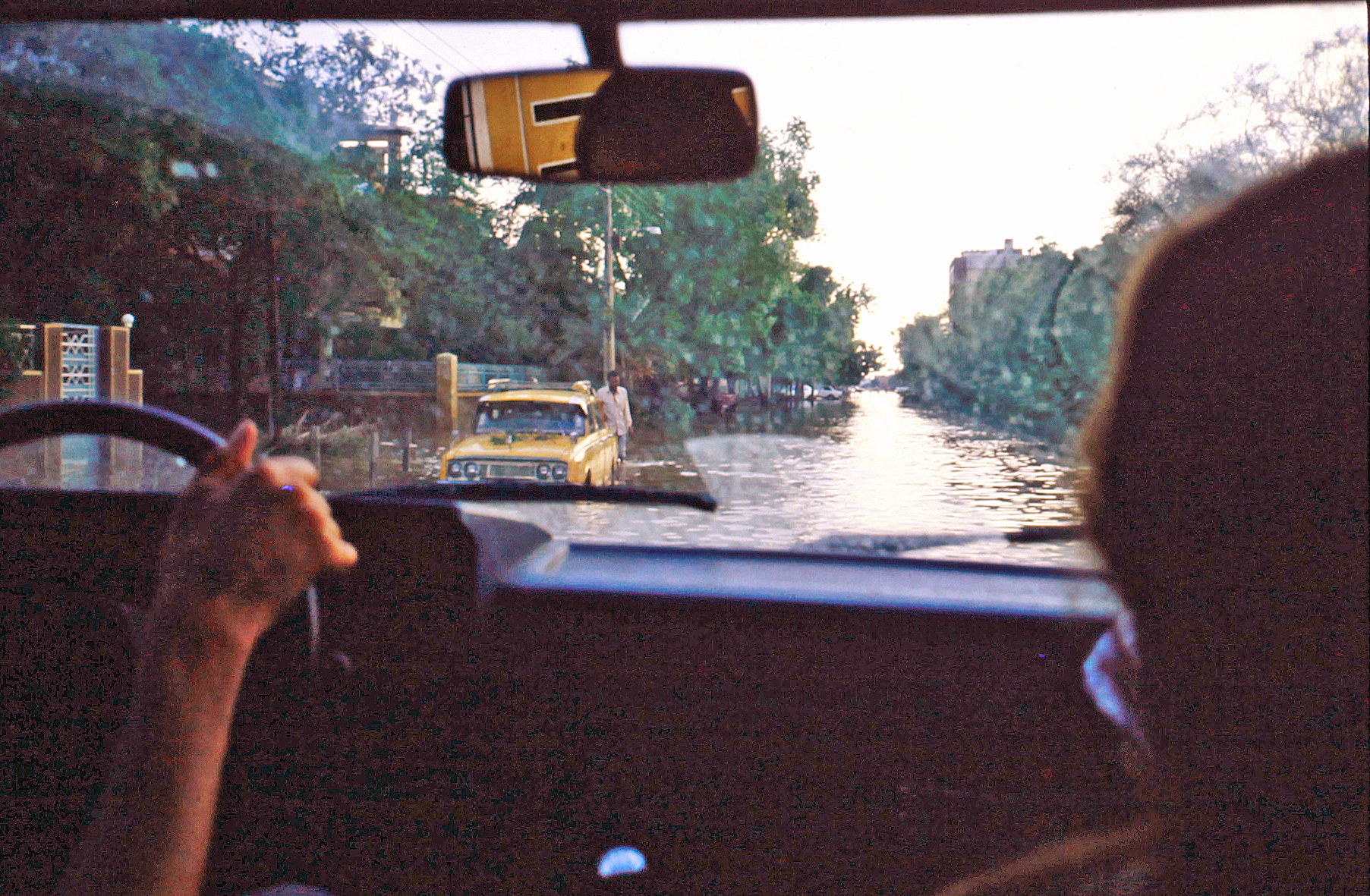
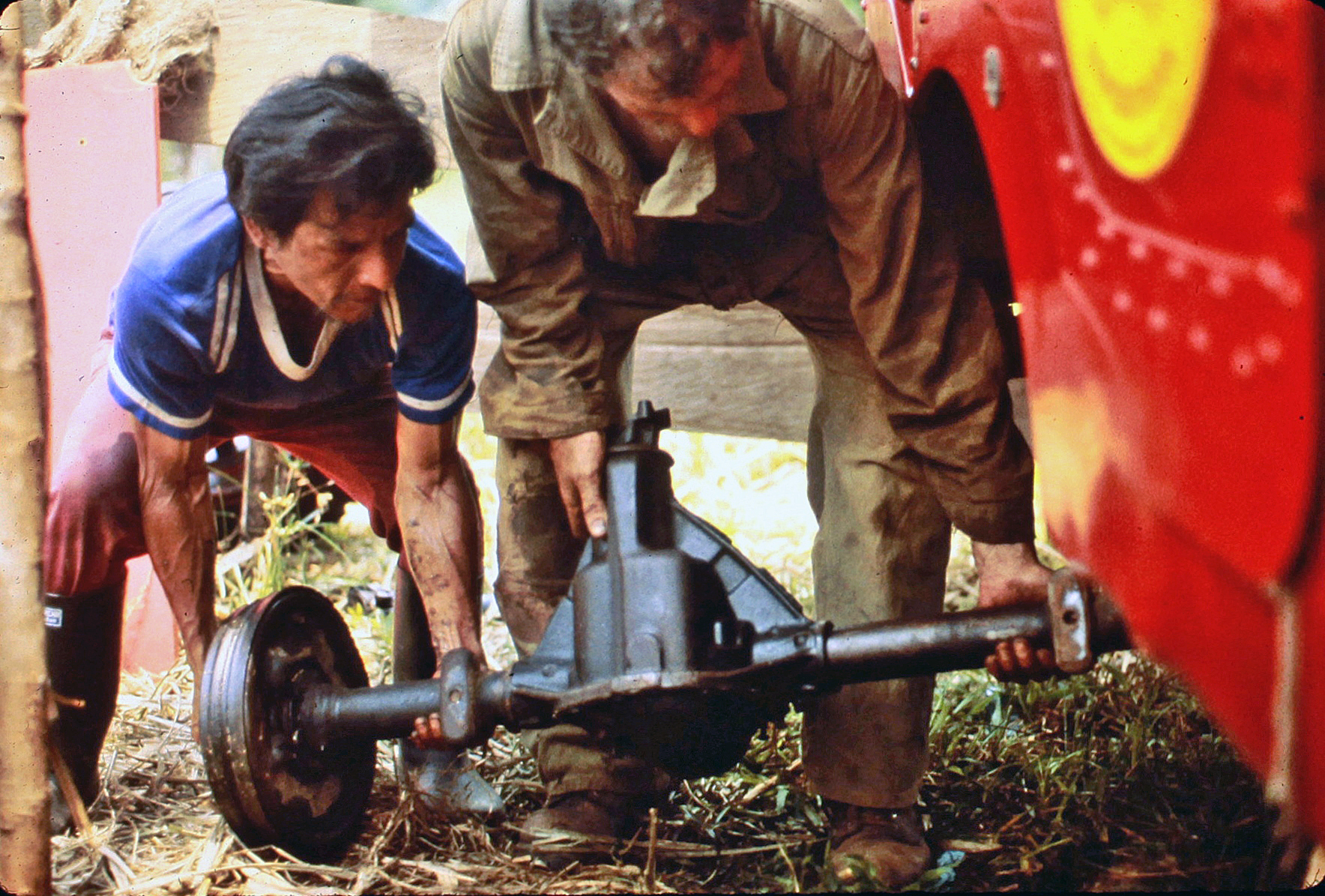
Can you share the story of when you were held against your will in the village of Púcuro, Panama, while transiting the Darién Gap?
We had left El Balsal on the morning of February 27, 1995, and arrived in Púcuro that afternoon. Prior to entering the village, Loren, Cookie, and Estanislao [Cookie and Estansislao were residents of Púcuro and working on the expedition] walked in to see the [Kuna] chief and get permission for us to enter and negotiate a work agreement for the two [members of the Chocó tribe also] accompanying us, José and Angel. Later that evening, Loren went to the usual community meeting to [finalize the] arrangements. There was a huge blowup [presumably over the Chocó men taking work away from the Kuna]. Loren assured them that José and Angel would not be required to work from Púcuro to Paya but would still need to accompany the expedition. There was more loud discussion, and Angel and José said they could remain behind. Loren then said, ‘They [tribal leaders] have no right to determine who is on this expedition.’
I was in camp alone, and suddenly, several men rushed in and attempted to seize our motorcycle. I sat on the bike and said, ‘No way. Loren is the only one who can move it.’ So, they started grabbing all our gear that was lying about—backpacks, duffel bags, machetes, etc. I hollered for Loren, and he walked up and said that they wanted the motorcycle brought to the meeting hut, and if it goes, then everything goes with it. I was terrified of what was happening. I felt betrayed by the people of Púcuro. We had done what was expected, asking permission to enter the village and camp. So, when they descended upon us and forcibly tried to take the Rokon, I was not only frightened but quite angry.
Now, the discussion in the meeting room turned to a new law that required motorcycles to pay a fee for passage through the village.
We informed them that we had no cash, only traveler’s checks. They agreed to accept a traveler’s check. We initially thought they wanted $50. ‘No,’ they said, ‘$500.’ Lots more heated discussion ensued. They would not let us go forward to Paya nor leave the way we had come. They chained the motorcycle to a post in the hut and told us we had to pay the $500 or we could not leave. At about 9:00 p.m. that night, Loren asked Angel and José to return to El Balsal and get word to the police in Paya and the American Embassy that we were being held against our will.
The Kuna did not like us talking to Angel and José and expressed their dislike. Loren again made it clear he would talk to whomever he wished. We were fearful of Angel and José leaving in the dark to hike the 6.5 miles back to El Balsal, but we had no other choice.
Three guardias arrived from Paya the next day, and a new meeting was held. There was not much they could do, as the Kunas are considered an autonomous nation in Panama. They were most sympathetic to our situation, however, and asked me if I felt safe. I was honest with them and said no. The officer of the group then addressed the townspeople who were gathered for the meeting and said something in Spanish that I only got bits and pieces of. Basically, something like, Nothing had better happen to these people.
Most of the guardias returned to their base in Paya, and one headed to Panama City to see if he could straighten things out for us on that end. We could not wait much longer. We had people on the payroll and men, horses, and mules waiting at the border for us. After more discussion with the villagers, we agreed we would pay $200 to both Púcuro and Paya (they said the new law applied there as well) but that we would not be able to pay the motorcycle fee until the trip was complete. Loren told them he would give Cookie the money to deliver to the villages. The leaders of Púcuro agreed.
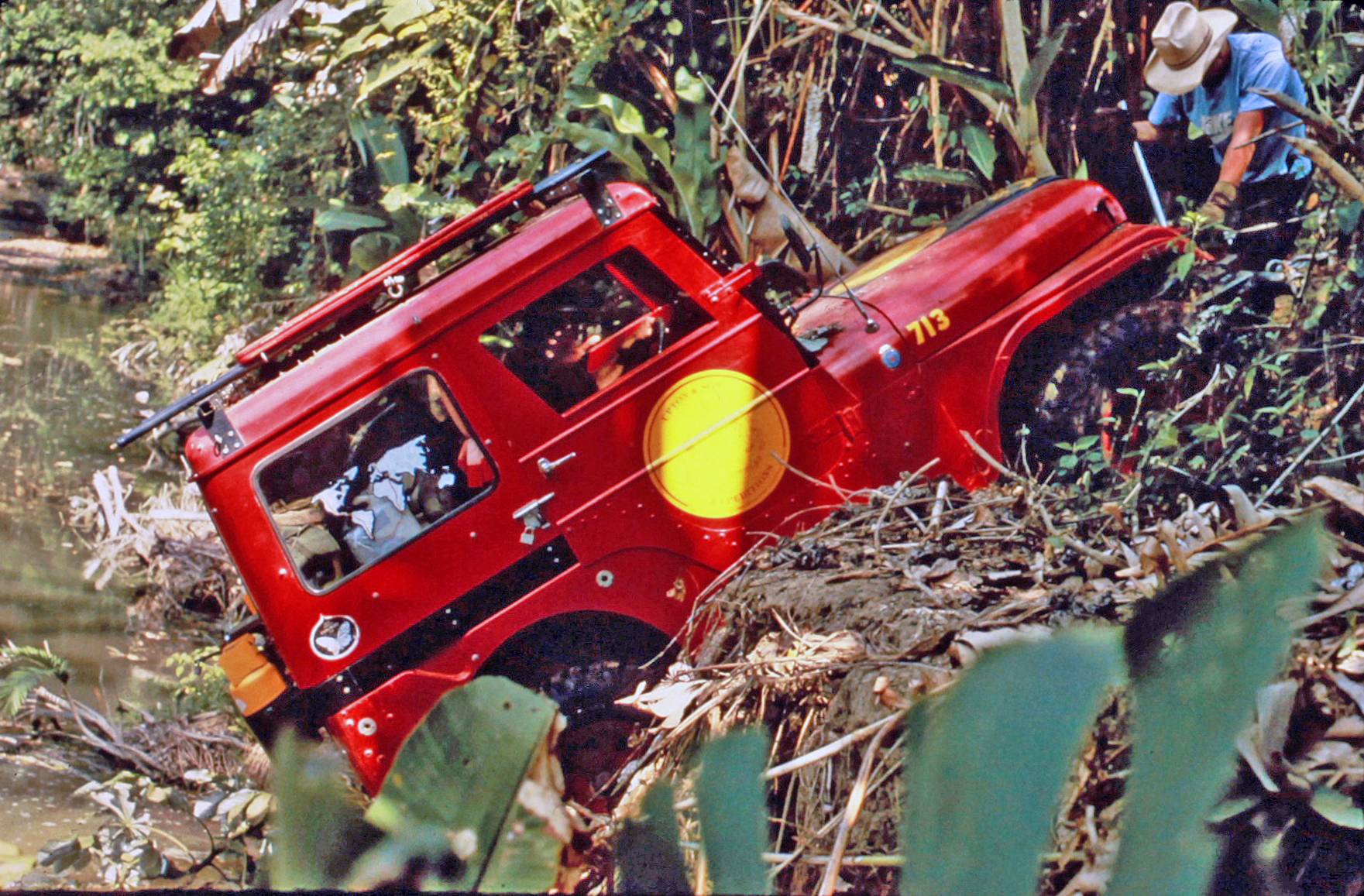

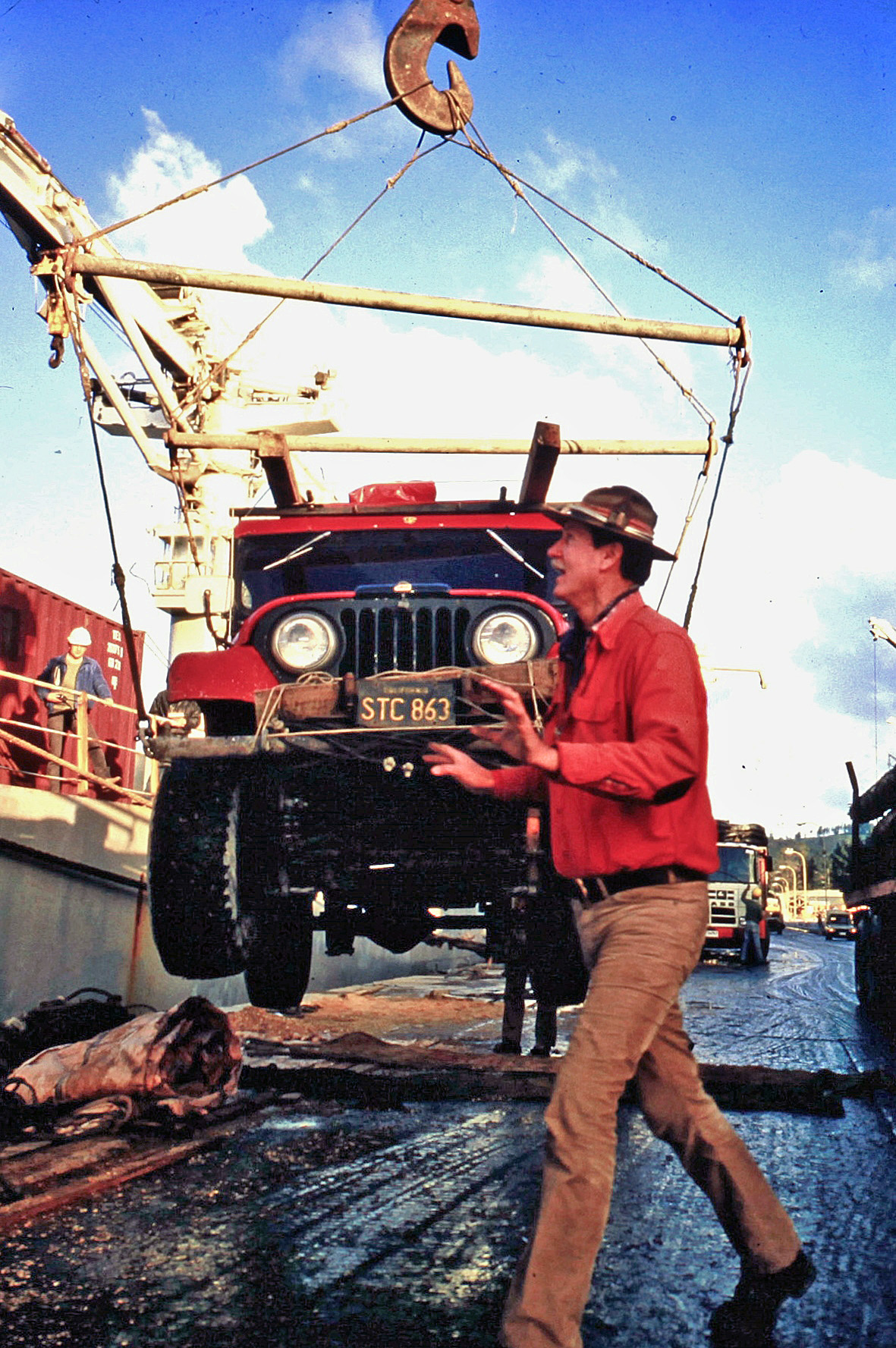
Was there ever a time during your travels when you feared for your life?
Yes, on June 22, 1988, in northern Sudan, on the western side of the Nile River, surrounded by a vast open desert of sand, gravel, and rocky hills. We were in the Sand Ship Discovery, our 1966 CJ-5 Jeep, traveling north to Egypt through the open desert following the sun and stars, and our compass had died. It was beyond hot, it was beyond remote, and it was desolate.
We had been following the Nile River, within reason and usually within sight. But several times in the course of our travel, we would have to swing out to the west around rocky outcroppings and hills that would come down to the river’s edge. Late on the afternoon of June 24, we were in the process of swinging out around a rather large rocky hill that came down to the river, and in doing so, we got into some soft sand and snapped our right rear axle shaft. We had already used our spare axle shaft, so we had only front-wheel drive and the winch and not much to winch to.
We managed to get the Discovery to a small group of tamarisk trees to get some much-needed shade, make camp, and begin to plan. I was about as scared as a person can be when faced with a major vehicle breakdown in the middle of nowhere, the outback of beyond. I had been hospitalized in Khartoum for three days, diagnosed with malaria and amoebic dysentery, and had been discharged just three weeks before all this happened.
Loren knew I was close to becoming a basket case, so to keep my brain working logically and accomplish something, he said, ‘Make a list of everything you think we need to take with us to survive. Don’t talk to me, and I’ll do the same. Then we will compare lists.’ We worked on our lists and then shared them when done. The lists were pretty much identical, except Loren had the inside rear-view mirror as a signal mirror. We then talked about what options were available to us. Not knowing where the Nile River was was our biggest concern; it was literally our lifeline, as we needed that water to survive. So the plan was the next morning, Loren would hike to the nearby rocky hill to see if he could spot the river and to try and determine if the river had a current; we were not sure if we were far enough north to be on Lake Nasser, and thereby have no current.
Loren returned after his hike with the best possible news: the Nile was only about a mile walk from camp, and from what he could determine from the top of the hill, the river had a good current. Now we had a way out, so we spent the next several hours gathering and packing our needed supplies, designing and building a raft, and securing the Sand Ship Discovery in some nearby brush for her stay in the desert until we returned.
We hiked to the river, hauling all our supplies and equipment to build our makeshift raft. The Discovery had two tin boxes in her tailgate that held our cooking equipment and food. They measured approximately 30 x 17 x 11 inches long. We took one of the boxes and sealed the seams with Permatex silicone sealant to make it watertight. Using tamarisk branches to build a frame, we attached our empty plastic gasoline jerry cans to it as outriggers and attached a long rope with an inflated spare tire tube. To a bystander, of which there were none, the resulting craft may have looked unreliable, but in our eyes, she was the most sea-worthy craft ever built. We put all our food, pots, clothing, and important papers inside the tin box. Loren and I waded into the mighty Nile, holding tight to the raft and the inner tube, and the Survival Ship Nile Queen was launched.

We floated with the current north for the rest of that day, never seeing another human. We got out of the Nile and made camp along the shore, building a fire [for our] cooked beans and boiled water for drinking. We were always listening for any sound that might indicate humanity.
The second day, we were in the river early. It was still quite hot, even early in the morning, but the difference in the water and air temperatures was considerable. Within about an hour and a half, I was so cold I could not feel my hands or feet; my teeth were chattering so much I could not focus on anything. We made our way to the east bank, built a small fire and had hot tea and peanut butter and jelly on what I called Sudanese tortillas, my attempt at making tortillas with just flour, salt, and water. We had to do this two more times during the day because it was getting so cold in the water.
Making camp the second night was a repeat of the first. We would lay there listening for a dog to bark, a baby to cry, a rooster to crow, but heard nothing but the endless buzz of the hungry insects outside our mosquito netting. The third morning was a repeat of the second, except we waited until about 8:30 a.m. to get in the Nile. An hour or so from that camp, we spotted a white cone tent on the east bank. Through broken English and sign language, we determined that the owner’s produce was going to be picked up later that evening and taken to the village of Wādī Ḥalfā—and we could get a ride. The story does not end here, but the fear for our life part does.

What is your greatest personal achievement?
It is hard for me to narrow this down to one specific thing in my life. In my mind, I’ve lived two different lives as an adult. The first was with my first husband, and from that marriage, we were blessed to have a beautiful, amazing, and wanderlust[-loving] daughter with whom I have a fantastic relationship.
For my second life, my life with Loren, I believe it is finding the strength and courage to carry on telling Loren’s story (and mine) after he passed away in August 2022. I was always a shy, timid, introverted person. Don’t laugh; it is true, especially during my first life. The longer I was with Loren, the more I learned how to be confident, strong, and independent. This does not mean Loren and I were not a team because we were, for sure and certain. But taking the tools that I learned from our 36 years together I am able to cope. I’ve always said Loren gave me my voice.
When have you grown the most in your life, and what caused that growth?
I guess I would have to say that this answer, like the previous one, has two parts. In my first life, I grew the most when my daughter was born. Becoming a mother is like no other thing on this earth. It is consuming, overwhelming, and without a doubt causes you to grow in ways that were previously unimaginable.
In my life with Loren, I grew immeasurably from the time I put my butt in the front seat of the Sand Ship Discovery early on the morning of February 21, 1985, until this moment. Loren’s wisdom, strength of character, and respect for women were undeniably the reasons for that growth. I am still growing and learning.

Tell me about your very best day ever.
Wow, again, two answers. The best day ever in my first life was the day my daughter was born. During my life with Loren, there were lots of best days. Still, the best day ever was May 3, 2018, when Loren and I drove the Sand Ship Discovery from a road we were on in Israel 30 years prior across the border and into Jordan to a road we had been on 30 years prior, thereby driving one American-made vehicle around the world on a north-south course, all on land, except for the South Atlantic Ocean.
How do you cope with the loss of your love, soulmate, and travel partner?
I cried. I cried a lot. I still cry. I talk to [Loren] almost every day. I want to make him proud of what I’m doing and how I’m doing it. Getting out and telling the story, Loren’s and mine, is my best coping mechanism. This way, he is still here with me. I am also reading the Bible. The Bible was the most essential book in Loren’s life. So I started at the beginning, and I read almost every morning. I find a great deal of comfort in reading it.
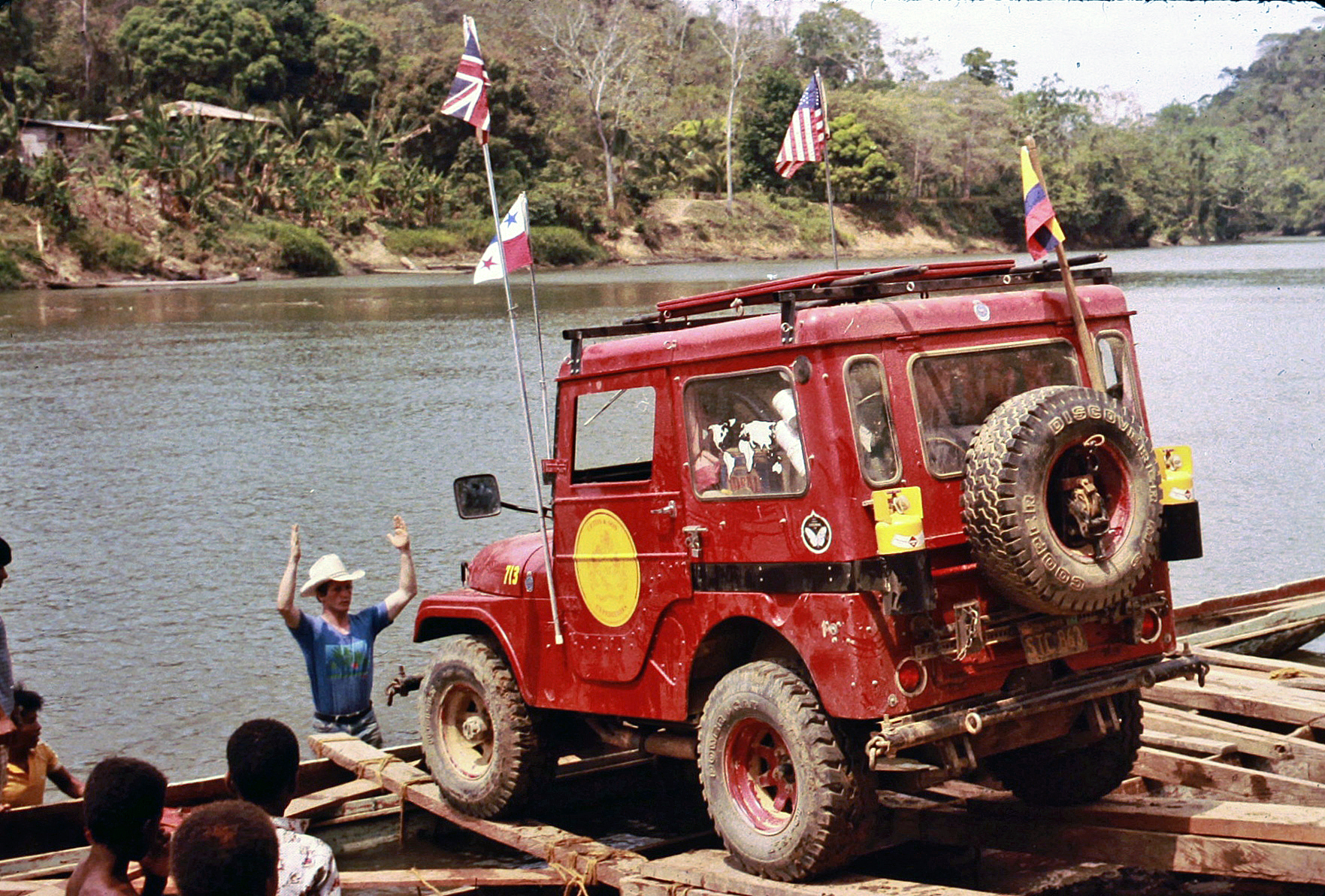
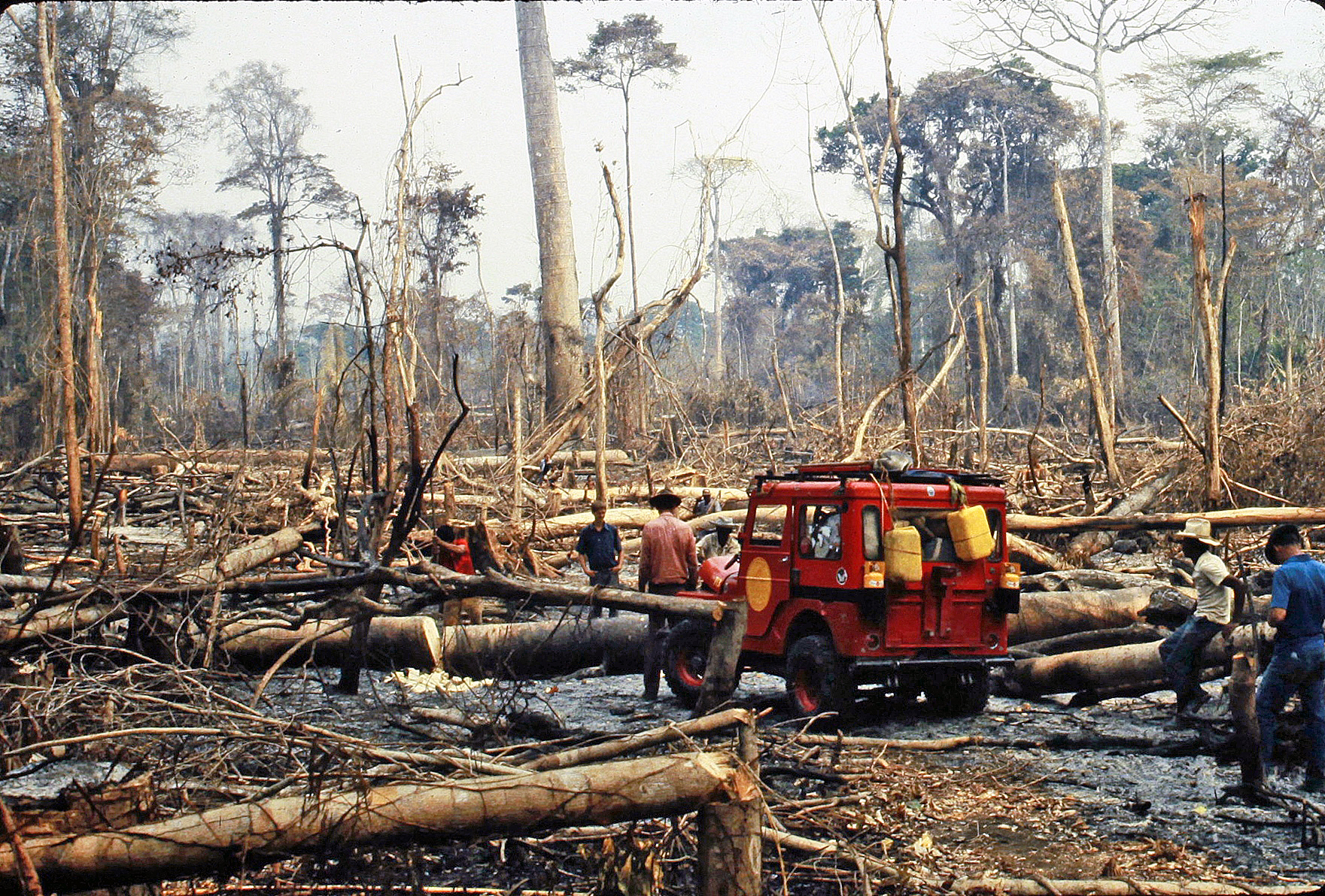

How have you changed over this past year?
Learning to live alone for the first time in my life is one of the hardest things I’ve done. But I’m improving at that. Thank goodness for my dog, Shay. However, she does not seem to care that I want to discuss things with her. Shortly after Loren passed in August 2022, I was sitting at my desk wondering what in the hell I was going to do. I thought about not making any significant decisions; that’s what the grief counselor said. But I [was] going to be 70 in October. I have good health now, and if nothing else, I’ve learned that life is short and to grab every opportunity and go. So, I decided to travel to as many Overland Expos and Jeep Fests as possible and get Loren’s and my story out there. With the help of Loren’s nephew, Laurence, and his wife, Lora, I purchased a 20-foot enclosed car hauler trailer that would hold the Sand Ship Discovery and headed for the horizon. Ten thousand five hundred miles later, I’m home in Idaho, contemplating doing the same thing next summer, only to try and attend more events.
I’ve become confident in myself, my driving, my towing, and my ability to handle breakdowns. In Loren’s words: ‘I’ve made it work.’

What goals are you pursuing right now?
I’ve got a few; some are short-term, others long-term. For the short term, I need to sort through 36 years of accumulated paperwork to try and determine what is essential to hold onto (and might be helpful for the book) and what is not essential. Another short-term goal is to bring our website, outbackofbeyond.com, into the 21st century and make it mobile-friendly. I will [also] start planning to travel with the Sand Ship Discovery for 2024.
My long-term goal is to write a book, and with the information and encouragement I’ve gained over this past summer from many new friends, I believe I can do this. In addition, a retirement home [must be found] for the Sand Ship Discovery. She needs to be in a museum on display with her story told so others can appreciate what she has done—what a carpenter and a secretary have done. What anyone with a goal and determination can do.
What is one question you wish I had asked you, and how would you have answered?
I will answer this with a question that Loren always asked audiences (usually school kids) when we would give a slideshow; it’s his philosophy in a nutshell. What is the only thing you, and you alone, can do without help from anyone? Fail. Because you and you alone must be the one to say, ‘I fail.’ Everything else you do, someone, somehow, has helped you.
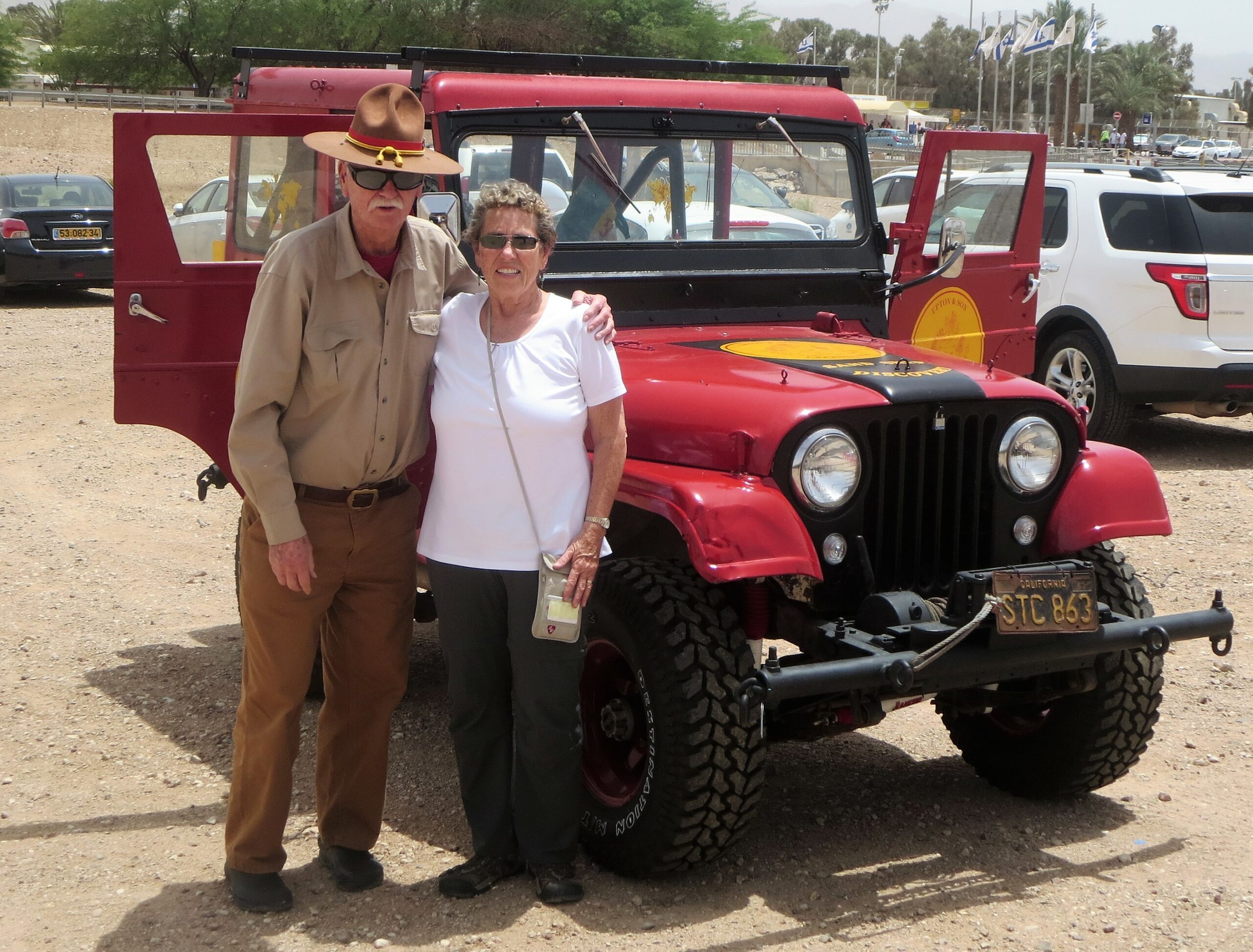
Instagram: @sandshipdiscovery
Email: patricia@outbackofbeyond.com
Editor’s Note: This article was originally published in Overland Journal’s Fall 2024 Issue.
Feralosophy: A Ladies-Only Overlanding Experience is Coming This October
Our No Compromise Clause: We do not accept advertorial content or allow advertising to influence our coverage, and our contributors are guaranteed editorial independence. Overland International may earn a small commission from affiliate links included in this article. We appreciate your support.


